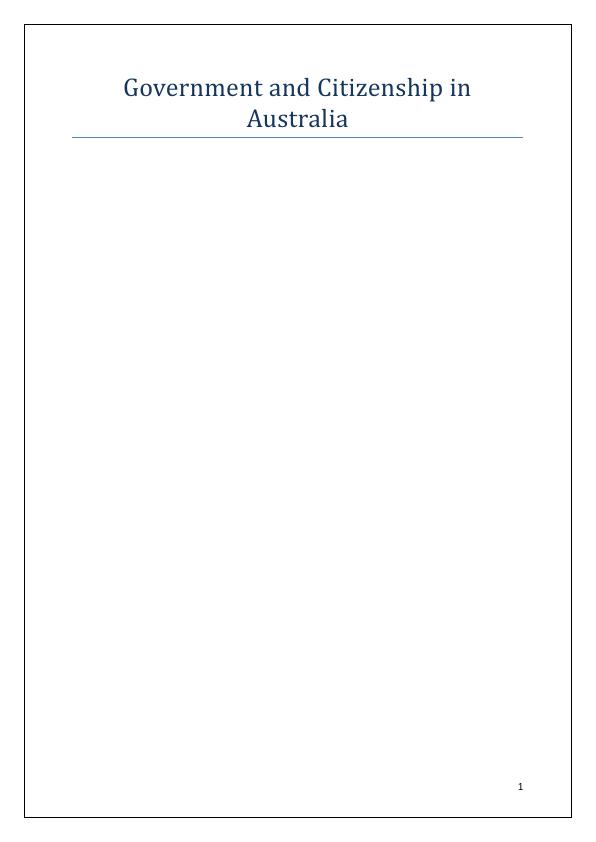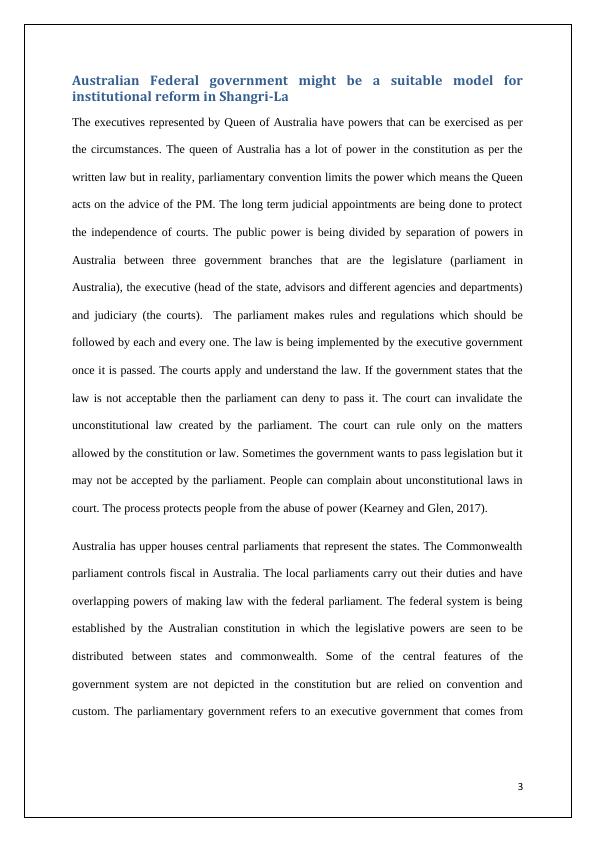Government and Citizenship in Australia
Compare the institutional arrangements in the story of Shangri-La with the institutional arrangements in the Australian constitutional context, considering cultural and historical context, separation of powers, and the role of the Queen in both systems.
9 Pages2281 Words44 Views
Added on 2023-01-19
About This Document
This document discusses the Australian model of government and its suitability for institutional reform in Shangri-La. It explores the powers of the executive, legislature, and judiciary in Australia, as well as the division of powers between states and the central government. The advantages of this model include accommodation of regional preferences and diversity, closer interaction between leaders and citizens, and the ability to address local issues effectively. However, there are also potential risks, such as the possibility of placing majority wants over community needs and variations in tax systems between states.
Government and Citizenship in Australia
Compare the institutional arrangements in the story of Shangri-La with the institutional arrangements in the Australian constitutional context, considering cultural and historical context, separation of powers, and the role of the Queen in both systems.
Added on 2023-01-19
ShareRelated Documents
End of preview
Want to access all the pages? Upload your documents or become a member.
Australian Federal Government Model for Institutional Reform in Shangri-La
|12
|2680
|49
Case Study Research Exercise on Australian Parliamentary System of Government
|8
|2336
|388
Structure and Role of the Australian Parliamentary System
|8
|1692
|330
Three Components of Parliament
|10
|2425
|460
Australian Society, System and Policies
|6
|1509
|283
Understanding the Constitutional Basis of Taxation in Australia
|8
|2821
|38



